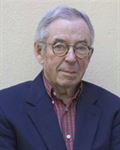
 The Popol Vuh, the ancient Mayan creation myth, has permeated several classes at UC Merced this year, offering undergraduate students several ways to learn more about Mayan culture. The focus on the book will peak this week with an art show and symposium.
The Popol Vuh, the ancient Mayan creation myth, has permeated several classes at UC Merced this year, offering undergraduate students several ways to learn more about Mayan culture. The focus on the book will peak this week with an art show and symposium.
The Popol Vuh began as an oral history for the Maya more than 2,000 years ago. A Spanish priest who was trying to preserve Maya culture first wrote it down in the mid-1700s. The story chronicles the Hero Twins and their battle against the grotesque Lords of the Underworld. Their victory over chaos and evil allowed the sun to rise for the first time, setting the stars in motion and the cosmos in order.
The text was chosen to be UC Merced’s Common Read for 2011-12. The Common Read program has all incoming freshmen read the same book as a way to enhance the campus’ sense of community and to provide an introduction to academic life. Each year a different book is selected.
Anthropology Professor Holley Moyes suggested the campus consider the Popol Vuh, given that Maya culture has been receiving a lot of attention with the onset of 2012, the last year of the current Maya calendar.
“There are a lot of misconceptions about 2012,” Moyes said. “It is the end of a calendrical cycle and the beginning of a new era. We should celebrate this new era by honoring the creation myth. It’s a great way to talk about the Maya people — who they were in the past and who they are today.”
Allen Christenson, the author of the Common Read’s translation of the Popol Vuh, will be on campus for a free public lecture from 7 to 8:30 p.m. Thursday in the Classroom and Office Building, Room 120. Christenson is a scholar of Maya literature and also lived among the Maya people in highland Guatemala. His work looks at the continuities between ancient and modern Maya theology.
Several professors and instructors incorporated the text into their classes. More than 200 students have created roughly 600 works of art inspired by the Popol Vuh in classes taught by Tonya López-Craig.
“In general, my classes have looked at main themes and characters in the stories of the Popol Vuh,” López-Craig said. “The cunning Hero Twins’ stories of overcoming defeat, the creation of humans in their various forms, the Underworld and the role and power of certain animals in the myths were among the most popular.”
“Reflections Maya,” a show of selected works of student art will be on display at the Merced Multicultural Arts Center from Feb. 29 to April 13. A reception will be held at 5:30 p.m. March 2.
Students in a cyber heritage class with lecturer Nicola Lecari last semester learned the basics of storytelling, virtual museum design, 3D computer modeling and real-time visualization techniques. As part of the course, they recreated scenes from the Popol Vuh using virtual reality technology. The videos can be seen on YouTube and will be playing at the art show opening.
Leading Popol Vuh scholar Michael Coe will deliver a keynote address at 6:30 p.m. March 2 at the arts center to accompany the gallery opening. Coe, a professor emeritus with Yale University, is credited with bringing the book into the mainstream by identifying deities represented in Maya iconography. He also traced the story back to Izapa, a pre-Maya site, which is now in the Mexican state of Chiapas.
The Popol Vuh! Symposium will host a dozen prominent Maya scholars from Guatemala, Belize and the United States. It will be held from 8:30 a.m. to 5:45 p.m. March 3 in the Classroom and Office Building, Room 105. The symposium is free and open to the public, and parking is free as well.






